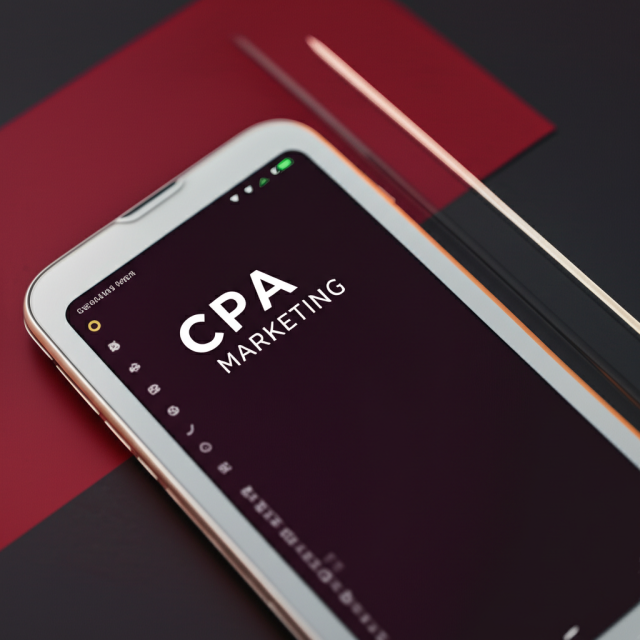Proven Tactics for High-ROI CPA Marketing Campaigns in 2024

Understanding Cost-Per-Action (CPA) Marketing
Cost-Per-Action (CPA) marketing has emerged as a cornerstone of performance-driven advertising strategies for brands seeking predictable returns on ad spend. Unlike traditional CPM or CPC models, CPA shifts the risk from the advertiser to the publisher or network by ensuring payment only when a predefined action—such as a form submission, a trial signup, or a sale—occurs. This arrangement aligns incentives across all stakeholders and forces every touchpoint, from creative to landing page, to optimize relentlessly for conversions rather than clicks or views alone. As the digital ecosystem grows more complex in 2024, savvy marketers must understand not only the fundamental mechanics of CPA but also how it interacts with broader channel strategies, attribution windows, and evolving privacy regulations. Mastery of CPA requires a nuanced appreciation of offer selection, audience segmentation, creative testing, landing page optimization, and real-time bid management. By internalizing the tradeoffs between control and risk that CPA entails, advertisers can architect campaigns that deliver scalable, sustainable ROI while maintaining a lean, performance-focused budget structure.

Setting SMART Objectives and Strategic Budgets
Every high-ROI CPA campaign starts with clearly defined objectives. By adopting the SMART framework—Specific, Measurable, Achievable, Relevant, and Time-bound—you ensure that your KPIs, whether they’re leads generated, sales completed, or app installs, have unambiguous goals and timelines. Align your budget to these objectives by reverse-engineering your target CPA (tCPA) from projected lifetime value (LTV) metrics and profit margins. For instance, if your average LTV is $150 and you aim for a 3:1 return on ad spend (ROAS), your tCPA should not exceed $50. Segment your budget across channels and publishers based on historical performance data, seasonal trends, and promotional calendars. Incorporate flexible budget pacing rules that dynamically shift spend toward top-performing placements in real time. This disciplined fiscal approach ensures you’re neither overspending on underperforming segments nor missing scaling opportunities on winning audiences.

Selecting High-ROI CPA Offer Types
Not all CPA offers are created equal. Evaluating lead-based (CPL), sale-based (CPS), download-based (CPD), and app install (CPI) models against your business objectives is critical to achieving peak ROI. CPL is ideal for top-of-funnel data collection, CPS suits e-commerce and subscription sales, CPD fuels content syndication and software trials, while CPI accelerates mobile engagement. Hybrid models that combine CPL and CPS can strike a balance between lead volume and purchase intent, allowing you to capture user data upfront and nurture toward a sale. Analyze each offer’s conversion funnel, average conversion rate, and payout structure to estimate net profitability. Prioritize offers with transparent attribution, reliable tracking mechanisms, and consistent publisher performance. Always negotiate tiered payout schemes or performance bonuses that reward volume milestones and quality thresholds, ensuring partners remain invested in delivering high-quality traffic.

Crafting Conversion-Focused Landing Pages
Your landing page is the make-or-break moment in any CPA funnel. Design dedicated pages for each offer vertical and traffic source to maintain message match—the practice of mirroring ad creative language, imagery, and promises on the landing page. Simplify form fields to minimize friction: only ask for essential data, use inline validation, and implement multi-step forms that group related questions. Leverage social proof elements such as customer testimonials, trust badges, and real-time counters to build credibility. Employ responsive design and fast-loading assets to cater to mobile audiences, which make up over 60% of web traffic in 2024. Test headline variations, call-to-action button colors, and hero images through A/B testing platforms. Incorporate dynamic content blocks that adapt copy and visuals based on user attributes—such as referral source or device type—to enhance relevancy and boost conversion rates by up to 30%.
Advanced Audience Segmentation and Targeting
Generic broad targeting rarely yields exceptional CPA performance. Instead, segment your audience into precise clusters—demographic cohorts, interest and behavior groups, and data-driven lookalike audiences. Use first-party data from CRM systems and website analytics to create custom segments of high-value customers, then expand reach with lookalike models on ad platforms. Layer behavioral triggers like past purchase history, site engagement, or video ad completion to tailor creative messaging and promotional offers. Retarget users who abandoned key pages with sequential messaging, offering progressive incentives such as discount codes, free trials, or value-driven content. Employ geo-fencing around competitor locations or industry events to capture in-market prospects. By orchestrating multi-layered targeting with frequency capping and exclusion lists, you avoid overexposure and reduce wasted spend on unresponsive audiences.
Strategic Ad Creative and Placement Optimization
High-impact creative is the catalyst for driving engagement and completing the desired action. Test multiple formats—static banners, HTML5 rich media, native ads, video snippets, and interstitials—to determine which resonates best with different audience segments. Craft concise, benefit-oriented headlines that emphasize the value proposition: “Unlock Your Free Demo,” “Claim 20% Off Today,” or “Install and Earn Rewards.” Pair eye-catching visuals with clear directional cues, such as arrows or contrasting buttons. For native placements, integrate copy and design seamlessly into the host environment to reduce ad blindness. Leverage contextual targeting to place your ads on content pages aligned with user intent, and use dayparting to concentrate spend during peak conversion windows. Monitor viewability metrics and adjust bids toward high-quality sites that consistently deliver viewable impressions above industry benchmarks.
Leveraging AI and Automation for Scalable Performance
Artificial intelligence and automation have revolutionized CPA marketing by enabling real-time bid optimization, dynamic creative optimization (DCO), and automated lead qualification. Implement programmatic bidding engines that analyze thousands of bid signals—time of day, device type, location, past behavior—and adjust bids in milliseconds to maintain target CPA thresholds. Use DCO platforms to assemble ad creatives on the fly, swapping headlines, images, and calls to action based on user attributes and performance history. Integrate chatbots and conversational widgets on landing pages to pre-qualify leads, triage inquiries, and schedule appointments without manual intervention. These AI-driven components reduce operational overhead, accelerate learning cycles, and empower you to manage hundreds of campaign permutations at scale with minimal manual oversight.
Robust Testing, Measurement, and Optimization
Continuous experimentation is the lifeblood of high-ROI CPA campaigns. Establish a testing roadmap that covers ad creative, landing pages, audience segments, bid strategies, and offer variations. Use both A/B and multivariate testing to isolate the impact of individual elements and their interactions. Implement holdout groups to measure incremental lift and avoid cross-pollination of treatments. Track micro-conversions—such as click-throughs and time on page—alongside macro-conversions to diagnose funnel bottlenecks. Maintain a centralized analytics dashboard that surfaces real-time performance metrics, including CPA, conversion rate, ROAS, and quality scores. Automate alerts for performance anomalies to enable rapid adjustments. Over time, aggregate test results to build a knowledge base of winning formulas that streamline decision-making and reduce reliance on guesswork.
Accurate Tracking and Attribution Best Practices
Precise measurement is non-negotiable for optimizing CPA spend. Deploy server-side tracking or post-back URLs to mitigate ad-blocker interference and privacy restrictions. Standardize UTM parameters to ensure consistent campaign-level data across Google Analytics, your ad platforms, and CRM tools. Leverage multi-touch attribution models to understand the full customer journey and allocate credit appropriately across channels. For high-value actions, implement offline conversion imports to connect in-store sales or phone leads back to digital touchpoints. Conduct regular data audits to identify discrepancies, reconcile cost data, and update attribution windows based on sales cycle length. With reliable tracking and attribution, you can make data-driven budget shifts that maximize ROI rather than chasing vanity metrics.
Scaling High-Performing CPA Campaigns
Once you’ve established a blueprint for success, it’s time to scale. Gradually increase budgets on top-performing segments while maintaining cost control through bid caps and pacing rules. Expand geographically by replicating your campaigns in new markets with similar audience profiles, adjusting for regional language, cultural nuances, and compliance requirements. Test adjacent channels—such as native networks, connected TV, or emerging programmatic audio—to uncover additional growth levers. Leverage lookalike models built from your highest-value converters to find untapped pockets of users. Document playbooks for each channel and audience archetype, outlining targeting criteria, creative templates, testing sequences, and optimization thresholds. This systematic approach transforms one-off successes into repeatable, cross-channel scaling engines.
Conclusion: Building a Sustainable CPA Ecosystem
Crafting high-ROI CPA marketing campaigns in 2024 demands a holistic, data-driven approach that spans offer selection, audience targeting, creative experimentation, landing page optimization, and sophisticated automation. By aligning budgets to SMART objectives, leveraging AI-powered bidding and creative tools, and instituting a culture of rigorous testing, marketers can unlock scalable growth while minimizing wasted spend. As privacy regulations and competition intensify, those who master the nuances of CPA—from precise attribution to dynamic audience segmentation—will secure a decisive advantage. Implement these proven tactics, document your findings, and continually refine your process to build a resilient, performance-obsessed CPA ecosystem that delivers exceptional returns year after year.









